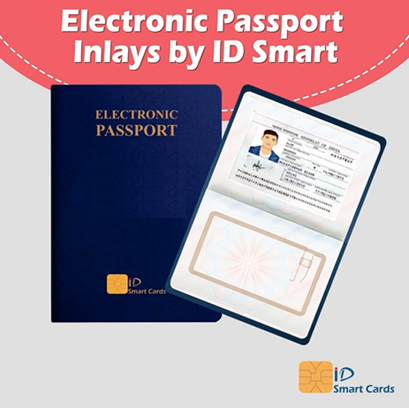E-Passport Inlays
Revolutionpizing Travel Security: The Role of E-Passport Inlays
In today’s globalized world, international travel has become a common part of many people’s lives. However, with the increased movement of people comes the need for heightened security measures. One of the most significant advancements in travel security technology is the introduction of electronic passports, or e-passports. At the heart of these modern travel documents lies a crucial component: the e-passport inlay. Let’s explore what are, their benefits, and how they are transforming travel security.
What Are E-Passport Inlays?
E-passport inlays are the embedded electronic components within a passport that store and transmit critical personal data. These inlays typically consist of a microchip and an antenna, which are laminated within the passport’s data page. The microchip contains essential information such as the holder’s biometric data (e.g., facial recognition, fingerprints), personal details, and the passport’s unique identifier. The antenna enables the data to be read by compatible scanning devices at border control and immigration checkpoints.

Benefits of E-Passport Inlays
- Enhanced Security with Biometrix: The primary advantage of is the significant boost in security they provide. The encrypted biometric data stored on the microchip makes it extremely difficult for unauthorized individuals to forge or tamper with the passport. This advanced security feature helps in preventing identity theft and illegal entry.
- Streamlined Border Control: It enables faster and more efficient processing at border control points. The electronic data can be quickly scanned and verified, reducing wait times for travelers. Automated e-gates equipped with biometric readers further streamline the process, allowing passengers to pass through with minimal human intervention.
- Accurate Identity Verification: Traditional passports rely on visual inspection and manual data entry, which are prone to errors. E-passports, with their embedded inlays, allow for precise and accurate identity verification. This reduces the likelihood of human error and ensures that the information presented matches the passport holder.
- Global Standardization: E-passports adhere to international standards set by the International Civil Aviation Organization (ICAO). This global standardization ensures that e-passports are universally recognizable and can be read by electronic scanners worldwide. This consistency enhances international travel security and facilitates smoother cross-border movement.
- Future-Proof Technology: The inclusion of inlays prepares passports for future technological advancements. As security technology evolves, e-passports can be updated to incorporate new features and improvements, ensuring that they remain effective in preventing fraud and unauthorized access.
How E-Passport Inlays Work
It function through Radio Frequency Identification (RFID) technology. When an e-passport is placed near an RFID reader, the antenna in the inlay picks up the signal, activating the microchip. The chip then transmits the stored data to the reader, which verifies the information against its database. This seamless exchange of data occurs within seconds, enabling quick and efficient identity verification.
Real-World Applications
- Airport Security: Airports around the world have adopted e-passport technology to enhance security and improve passenger flow. Automated e-gates equipped with biometric scanners read the data from the inlay, allowing travelers to pass through quickly and securely.
- Immigration Control: Immigration checkpoints benefit from the enhanced security and efficiency provided by e-passports. The biometric data ensures that only authorized individuals can enter a country, reducing the risk of illegal immigration.
- Border Management: E-passports play a crucial role in modern border management systems. The ability to accurately verify identities helps authorities maintain the integrity of national borders and prevent criminal activities.
As technology continues to advance, inlays are expected to incorporate even more sophisticated features. Future developments may include advanced biometric authentication methods, such as iris recognition, and increased data storage capacity for additional security information. The integration of blockchain technology could also enhance the security and traceability of e-passports, making them even more resistant to fraud.
E-passport inlays are revolutionizing the way we travel by providing enhanced security, faster processing, and accurate identity verification. As countries worldwide continue to adopt and refine this technology, the future of travel looks safer and more efficient than ever before. Embracing the benefits of inlays not only protects travelers but also strengthens global security infrastructure. Stay informed and prepared as we move towards a more secure and seamless travel experience.

 Whats app
Whats app